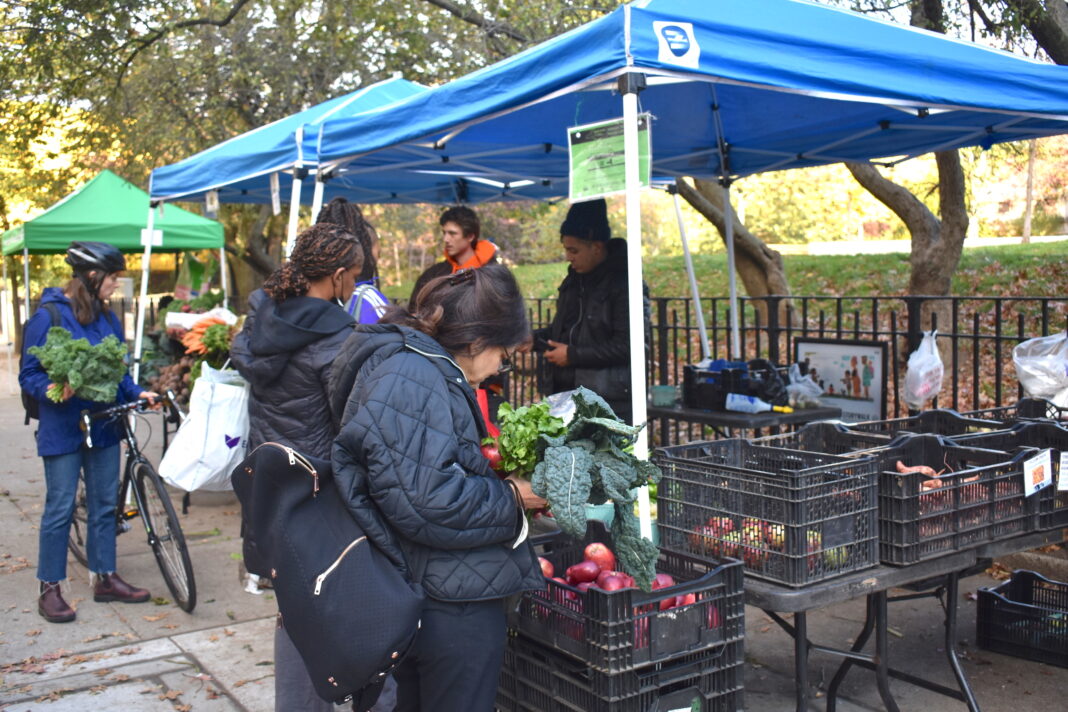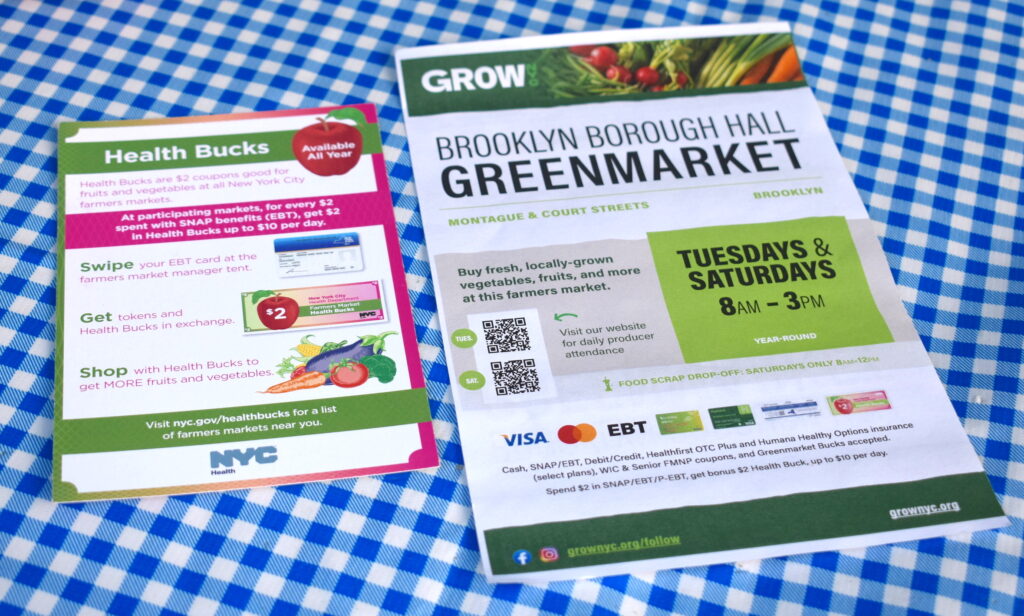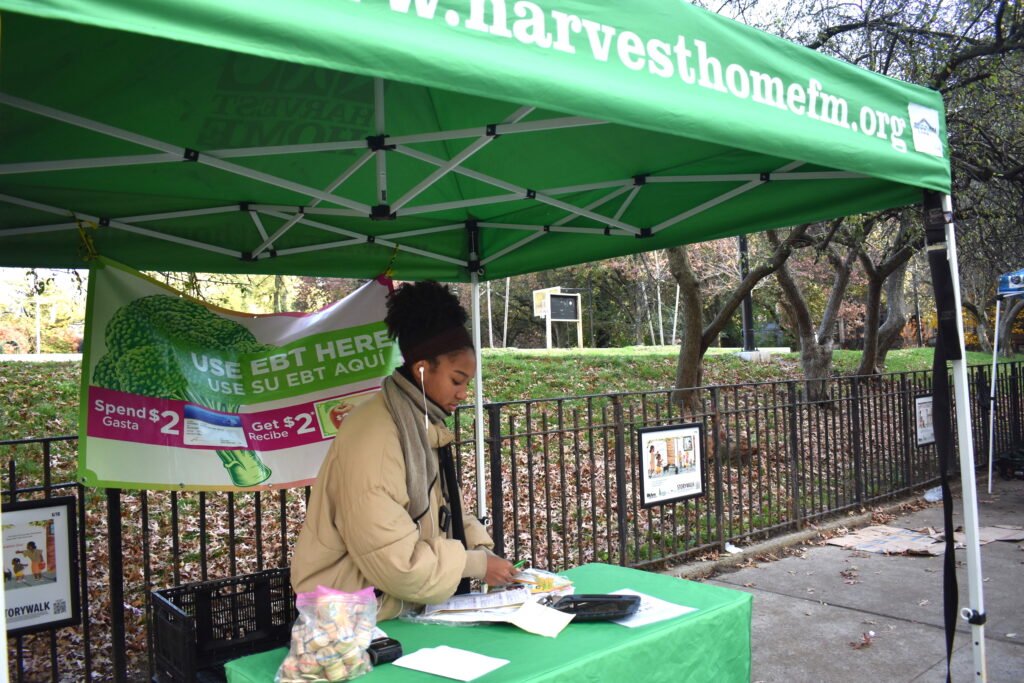New York City is encouraging its lower-income residents to shop at farmers markets. And they’re giving them the Health Bucks to do so.
Many shoppers think the fresh produce supplied by farmers’ markets is a luxury only the wealthy can afford. However, programs like NYC’s Health Bucks make local fruits and veggies more affordable to low-income residents.
The New York City Department of Health and Mental Hygiene distributes vouchers called Health Bucks to Supplemental Nutrition Assistance Program (SNAP) recipients to use at farmer’s markets. SNAP, formerly known as food stamps, assists low-income residents with food costs.
How Health Bucks Works
Since 2021, SNAP recipients receive $2 in Health Bucks for every $2 of their SNAP benefits they spend at NYC farmers’ markets or farm stands. (As of October 2023, single-person households can receive a maximum of $291 per month in SNAP benefits. Bigger households get larger SNAP allowances.) . They’re able to receive up to $10 in Health Bucks per day, meaning that if they decide to spend $10 in SNAP benefits at the farmers’ market, the added Health Bucks will allow them to spend $20. “I came out to get something to make for dinner tonight,” said Cleopatra, a Brooklynite using Health Bucks at a Crown Heights farmstand. “It makes me cook more.”
Some city vendors have noticed the program attracts new community members to their stalls. Ernesto Dillon, a vendor for Grandpa Farms of Chester, New York, sells at farm stands in Crown Heights and the Bronx. He’s appreciative that Health Bucks make his items more affordable to the area’s residents. “I think it's very nice for people who are not used to having access to the fancy supermarkets to see such high-quality produce,” he said.
Cleopatra agreed. “It just makes it easier to find more fresh fruits and vegetables in the community,” she said.
Even sellers in higher-income areas are seeing increased use of the programs. “I don't think it's changing the demographic too much, but we're definitely accepting more of those [Health Bucks],” said Mike Hyler of Wilklow Orchards in Hudson Valley, who manages a farmstand at the Brooklyn Borough Hall Greenmarket.
The earliest iteration of the city’s Health Bucks program launched in 2005. Margrethe Horlyck-Romanovsky, an assistant professor of health and nutrition sciences at Brooklyn College, helped design the original Health Bucks. “I've been there all along and I'm really excited about the magnitude of the program,” Horlyck-Romanovsky said. During the early days of Health Bucks, the biggest challenge was redemption. The certificates were given out, but people weren’t spending them. That changed when the distribution method was restructured. “When the farmer's market started providing them at the point of purchase, that's when I felt that it began to make sense,” Horlyck-Romanovsky said. “You go to the farmer's market manager, you say, ‘I want to spend this much money with my [SNAP benefits]’ and then you get [the equivalent amount] of Health Bucks.”
When people have access to quality produce that’s affordable, they can make healthier meals. Some low-income shoppers don’t want to risk losing money (and meals) on produce they might not enjoy. “You don't have the luxury of experimenting and purchasing produce and serving it to yourself and your family and potentially having it rejected because it's a new flavor, it's a new texture, it may not be a known food,” Horlyck-Romanovsky said. Health Bucks makes it more affordable to take risks.
In recent years, farmer’s markets have been more attuned to the different ethnic populations they serve. Horlyck-Romanovsky shops at the Cortelyou market, which offers produce more aligned to the taste palettes of the Caribbean and Central and South American communities in the area. “Farmers have become much more flexible,” Horlyck-Romanovsky said, “listening more to what people are asking for.”
Horlyck-Romanovsky also noted that New Yorkers don’t have a lot of regional food supply or even food processing plants. “A very large chunk of our produce comes from California,” Horlyck-Romanovsky said. But Health Bucks stimulate the local agricultural economy in New York, ensuring more employment opportunities in the state. “The greenhouse gas emissions associated with our purchases are … smaller when we shop locally,” Horlyck-Romanovsky said.
While the Health Bucks program continues to reach more community members, hurdles remain. Some farm stands operate only one day a week for a couple of hours, which often coincide with many low-income shoppers' work schedules. Plus, farmer’s markets have limited offerings, and shoppers often need to make another trip to a supermarket to finish up their shopping. “That is also a barrier, especially for New Yorkers,” Horlyck-Romanovsky said, “because time is a very precious commodity.”
The city has about 130 farmers’ markets that accept Health Bucks. About thirty are open year-round — mostly the larger markets such as Union Square — while others are open between March and June. Use this map to find one near you.





